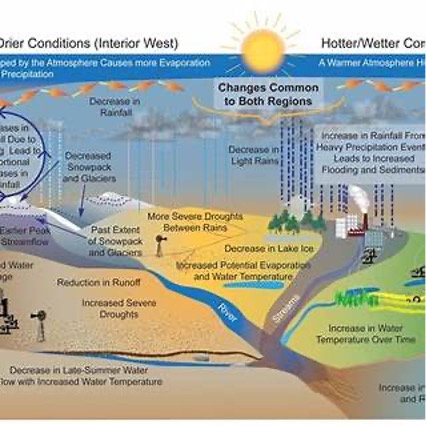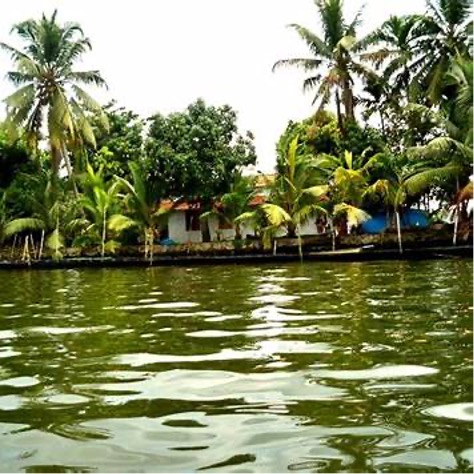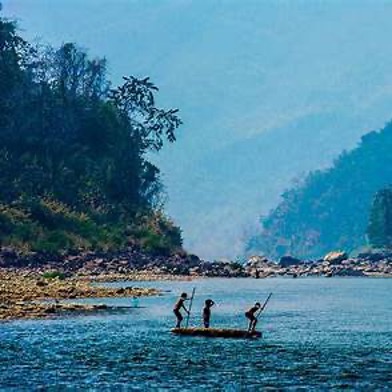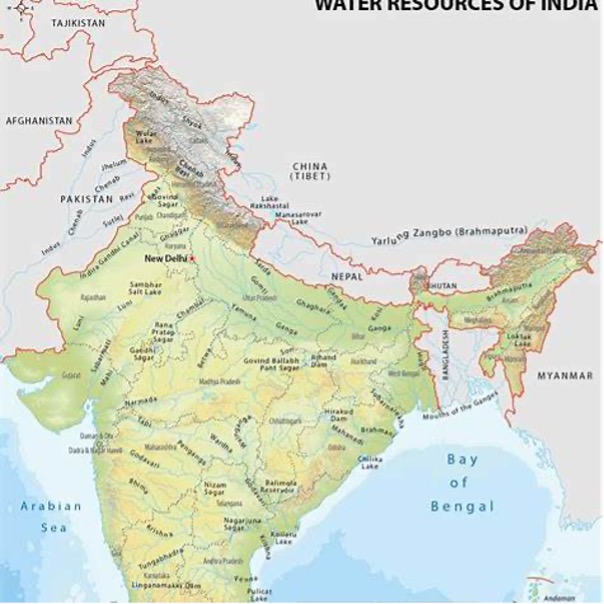Water Bodies: Importance and Need for Their Preservation
1. Introduction
Water is the cornerstone of life. Earth’s hydrosphere—comprising rivers, lakes, wetlands, ponds, reservoirs, glaciers, and oceans—constitutes the planet’s most vital ecological system. Collectively referred to as water bodies, these natural and man-made reservoirs not only support biodiversity but also shape civilizations, economies, and climatic stability. In recent decades, however, growing urbanization, industrial expansion, population pressure, and climate change have triggered alarming degradation of these ecosystems.
India, a country with a rich heritage of reverence for rivers and lakes, is witnessing an acute crisis in the preservation of its water bodies. A 2021 Central Pollution Control Board (CPCB) study found that over 350 water bodies across India were polluted, and thousands more had shrunk or disappeared. This article delves into the multifaceted importance of water bodies and highlights the urgency of preserving them for ecological sustainability, economic development, and social welfare.

2. Types of Water Bodies
Water bodies can be broadly categorized into:
A. Freshwater Bodies
- Rivers and Streams – Flowing water systems crucial for irrigation, drinking, and transport.
- Lakes and Ponds – Standing freshwater ecosystems supporting aquatic life and groundwater recharge.
- Wetlands – Marshes, swamps, and floodplains; known for their biodiversity and carbon sequestration.
- Reservoirs and Dams – Man-made for irrigation, hydropower, and urban water supply.
B. Marine and Coastal Water Bodies
- Oceans and Seas – Regulate global temperatures and are essential for climate and commerce.
- Estuaries and Mangroves – Transition zones between river and marine environments; crucial for fisheries and storm protection.

3. Ecological Importance of Water Bodies
A. Biodiversity Hotspots
Water bodies are home to more than 10% of all known species, including migratory birds, amphibians, fish, and aquatic plants. India’s Chilika Lake and the Sunderbans are among the most productive wetlands globally.
B. Climate Regulation
Lakes and oceans act as heat sinks, stabilizing regional and global temperatures. Wetlands absorb carbon dioxide and methane, serving as natural carbon sinks.
C. Water Cycle Maintenance
Water bodies are vital for evaporation and precipitation, recharging aquifers, and maintaining hydrological equilibrium.
D. Natural Disasters Buffer
Wetlands and floodplains mitigate floods and reduce damage by absorbing excess rainfall and storing runoff.
4. Socio-Economic Importance
A. Agriculture and Livelihoods
Over 60% of India’s agriculture is rain-fed, relying heavily on water bodies for supplemental irrigation. Wetlands support fishing, reed harvesting, and livestock rearing, sustaining millions.
B. Drinking Water and Sanitation
Reservoirs and lakes supply water to cities. For example, Bengaluru depends on the Cauvery River and several man-made lakes for its water needs.
C. Hydropower and Industry
Water bodies power hydroelectric plants and serve as industrial input in cooling, processing, and waste dilution. India has a hydropower capacity of over 47 GW.
D. Cultural and Religious Significance
From the Ganges to Pushkar Lake, Indian water bodies hold deep cultural and spiritual value, forming a key part of pilgrimages and festivals.
E. Recreation and Tourism
Lake tourism (e.g., Dal Lake, Vembanad Lake) generates substantial revenue and employment, making ecological preservation economically beneficial.

5. Threats to Water Bodies
A. Pollution
Major rivers like Yamuna and Ganga are choked with untreated sewage, industrial effluents, and solid waste. Eutrophication from fertilizers depletes oxygen, killing aquatic life.
B. Encroachment and Urbanization
Urban lakes are vanishing due to illegal constructions. In Bengaluru alone, over 200 lakes have disappeared since the 1960s.
C. Climate Change
Glacial melt, erratic rainfall, and rising sea levels are destabilizing aquatic ecosystems, especially in the Himalayan and coastal regions.
D. Overexploitation
Excessive withdrawal for irrigation, mining of river sand, and dam construction have altered flow patterns, affecting river health and aquatic biodiversity.
E. Neglect of Traditional Systems
India’s indigenous water management systems like step wells, tanks, and baolis have been neglected due to modern infrastructure focus.
6. Case Studies in India
A. Rejuvenation of Sabarmati River, Gujarat
Once a seasonal river reduced to a drain, the Sabarmati was revived through riverfront development, cleaning drives, and wastewater treatment, serving as a model for others.
B. Restoration of Kankaria Lake, Ahmedabad
Previously encroached and polluted, this lake was rejuvenated with public-private partnership, creating a vibrant tourist and recreational zone.
C. East Kolkata Wetlands
Despite being a Ramsar site, these wetlands face real estate threats. However, community involvement and legal activism have helped preserve this natural wastewater treatment system.

7. Global Examples and Comparisons
A. China’s Sponge Cities
Faced with urban flooding and shrinking wetlands, China launched sponge cities—urban areas designed to absorb and reuse rainwater using green infrastructure like bioswales and permeable pavements.
B. United States – Wetland Mitigation Banking
The U.S. uses a system of “mitigation banking” where developers must compensate for any destruction of wetlands by funding restoration projects elsewhere.
C. Netherlands – Integrated Water Management
With 60% of its land below sea level, the Netherlands uses a combination of dikes, canals, retention basins, and artificial lakes to manage water sustainably.
D. Australia – Murray-Darling Basin Plan
Australia’s largest river system is governed by an integrated plan to allocate water among competing users, ensure ecological flow, and restore wetlands.
8. Government Policies and Legal Framework in India
A. National Water Policy (2012)
Emphasizes integrated water resource management (IWRM) and the ecological value of water bodies.
B. Wetlands (Conservation and Management) Rules, 2017
Bans conversion or construction near notified wetlands. It encourages states to identify and map wetlands with the help of satellite imagery.
C. Namami Gange Mission
A comprehensive program to rejuvenate the Ganga through pollution abatement, riverfront development, and biodiversity conservation.
D. Jal Shakti Abhiyan
Focuses on rainwater harvesting, aquifer recharge, and lake restoration, with the aim of water conservation through community participation.

9. Economic Cost of Neglect
Failure to preserve water bodies results in:
- Increased cost of water treatment
- Flood damage and crop losses
- Public health crises (e.g., water-borne diseases like cholera and diarrhea)
- Decline in fishery and tourism income
A NITI Aayog report in 2018 warned that 21 Indian cities could run out of groundwater by 2030, with water demand doubling supply.
10. Strategies for Preservation and Restoration
A. Community Engagement
Empowering local communities with ownership and stewardship roles ensures sustained care. The model of village tank committees in Tamil Nadu is a case in point.
B. Urban Waterbody Restoration
Cities must integrate lake rejuvenation in master plans, ensure zero discharge into lakes, and de-silt water bodies regularly.
C. Technology and Data
- Remote sensing to track shrinkage
- AI and GIS tools to manage water resources
- Smart sensors to monitor water quality
D. Regulatory Enforcement
Strict action against polluting industries, illegal encroachments, and water theft is essential. Courts and National Green Tribunal have played active roles.
E. Sustainable Design
- Constructed wetlands for sewage treatment
- Floating wetlands on urban lakes to restore aquatic health
- Rain gardens and bioswales in urban planning
F. Public-Private Partnerships
Collaborations like Mission Kakatiya (Telangana) and CSR-funded lake rejuvenations show that partnerships between government, corporations, and citizens can be effective.

11. Investments Required
According to various government estimates and expert analyses:
- Urban waterbody restoration (including de-silting, fencing, STP installation): ₹50–100 crore per city for large cities like Delhi, Bengaluru.
- National wetlands restoration may require over ₹50,000 crore over the next decade.
- Awareness campaigns and capacity building need at least ₹5,000 crore for rural and urban areas.
- Investment in technology infrastructure (sensors, GIS, AI tools) can cost ₹1,000–2,000 crore for national rollout.
12. Role of Education and Media
Media, NGOs, and schools play a vital role in creating awareness. Campaigns like “Revive Our Rivers” or school-level programs on lake adoption instill ecological consciousness from a young age.
13. Present Coverage of Water Bodies in India
According to India’s first comprehensive Water Bodies Census conducted by the Ministry of Jal Shakti, a total of 24,24,540 water bodies have been enumerated across the country. Of these, 97.1% (23,55,055) are located in rural areas, while 2.9% (69,485) are in urban regions. The distribution of these water bodies is as follows:Press Information Bureau+1Vikaspedia Energy+1The Financial Express+2Vikaspedia Energy+2Press Information Bureau+2
- Ponds: 59.5% (14,42,993)
- Tanks: 15.7% (3,81,805)
- Reservoirs: 12.1% (2,92,280)
- Water conservation schemes/percolation tanks/check dams: 9.3% (2,26,217)
- Lakes: 0.9% (22,361)
- Others: 2.5% (58,884)Press Information Bureau+1The Financial Express+1
In the state of Maharashtra, for instance, 97,062 water bodies have been identified, with 99.3% situated in rural areas.Press Information Bureau
14. Trends in Water Body Coverage: Increasing or Decreasing?
The coverage of water bodies in India has been experiencing a declining trend due to various factors:
- Urbanization and Encroachment: Rapid urban development has led to the encroachment and degradation of many water bodies.
- Pollution: Industrial effluents, sewage discharge, and solid waste have severely polluted numerous lakes and rivers.
- Climate Change: Altered rainfall patterns and increased evaporation rates have contributed to the drying up of several water bodies.
For example, a study analyzing satellite data over 30 years indicated a significant reduction in surface water area across various river basins in India. PMC
15. Strategies to Preserve and Expand Water Bodies
To address the decline and promote the expansion of water bodies, several measures can be undertaken:
a. Restoration and Rejuvenation Projects
- Mission Kakatiya (Telangana): Aimed at restoring over 46,000 tanks and lakes, this initiative has enhanced irrigation potential and groundwater recharge. safewaternetwork.org+2Wikipedia+2Wikipedia+2
- Kudimaramathu Scheme (Tamil Nadu): This community-driven approach focuses on the maintenance and management of irrigation tanks by local stakeholders. Wikipedia
b. Policy and Regulatory Measures
- Wetlands (Conservation and Management) Rules, 2017: These rules aim to protect wetlands from encroachment and degradation.
- National Water Policy: Emphasizes the need for integrated water resources management and the protection of water bodies.
c. Community Participation
Engaging local communities in the conservation efforts ensures sustainable management. Traditional practices like the construction of Johads in Rajasthan have proven effective in water conservation. Wikipedia
d. Technological Interventions
- Remote Sensing and GIS: Utilized for mapping and monitoring water bodies.Wikipedia
- Real-time Water Quality Monitoring: Helps in assessing the health of water bodies and taking timely remedial actions.
16. Impact of Water Bodies on Agriculture and Climate
a. Agricultural Benefits
- Irrigation: Water bodies serve as primary sources for irrigation, especially in regions lacking perennial rivers.
- Soil Fertility: The silt from desilted tanks is rich in nutrients, enhancing soil fertility and crop yields.waterconservation.artofliving.org+14Wikipedia+14Wikipedia+14
- Livelihoods: Fisheries and allied activities in water bodies provide employment to many rural communities.
b. Climate Regulation
- Microclimate Stabilization: Large water bodies help in moderating local temperatures and humidity levels.
- Carbon Sequestration: Wetlands act as carbon sinks, absorbing greenhouse gases from the atmosphere.
- Flood Mitigation: Natural water bodies absorb excess rainfall, reducing the severity of floods.
17. Investment and Maintenance Costs
Preserving and expanding water bodies require substantial investment. India has committed to significant funding in this area:
- Urban Water Body Restoration: The government plans to invest nearly $300 million over two years to mitigate flooding and conserve water in seven cities, including Mumbai, Chennai, and Bengaluru .The Economic Times+3World Economic Forum+3Business News India+3
- National Water Sector Investment: India plans to invest more than $240 billion in the country’s water sector, including efforts to restore groundwater levels and implement the world’s largest dam rehabilitation program.Smart Water Magazine
- Kalpasar Project: This ambitious project in Gujarat aims to build a 30 km dam across the Gulf of Khambhat to create a massive freshwater reservoir. The estimated cost is INR 90,000 crore (approximately $12.75 billion).Wikipedia
18. Strategies for Preservation and Expansion
a. Restoration and Rejuvenation Projects
- Mission Kakatiya (Telangana): Aimed at restoring over 46,000 tanks and lakes, enhancing irrigation potential and groundwater recharge.
- Kudimaramathu Scheme (Tamil Nadu): A community-driven approach focusing on the maintenance and management of irrigation tanks by local stakeholders.
b. Policy and Regulatory Measures
- Wetlands (Conservation and Management) Rules, 2017: These rules aim to protect wetlands from encroachment and degradation.
- National Water Policy: Emphasizes the need for integrated water resources management and the protection of water bodies.
c. Community Participation
Engaging local communities in conservation efforts ensures sustainable management. Traditional practices like the construction of Johads in Rajasthan have proven effective in water conservation.
d. Technological Interventions
- Remote Sensing and GIS: Utilized for mapping and monitoring water bodies.
- Real-time Water Quality Monitoring: Helps in assessing the health of water bodies and taking timely remedial actions.
19. Conclusion
Water bodies are integral to India’s environmental sustainability, agricultural productivity, and climate resilience. Their preservation and expansion require concerted efforts involving substantial investment, robust policy frameworks, community engagement, and technological innovation. By adopting a holistic approach, India can ensure the longevity and health of its water bodies, securing ecological balance and socio-economic well-being for future generations.
20. References
- Central Pollution Control Board (CPCB), “Status of Water Bodies in India”, 2021
- NITI Aayog, “Composite Water Management Index”, 2018
- Ministry of Jal Shakti, Government of India
- Wetlands International – India Program
- World Bank, “Managing Urban Water Scarcity”, 2020
- Ramsar Convention Secretariat
- Indian Institute of Remote Sensing (IIRS) Reports
- UN Water, “The United Nations World Water Development Report”, 2023
- China Ministry of Housing and Urban-Rural Development – Sponge City Program
- Netherlands Delta Program Reports